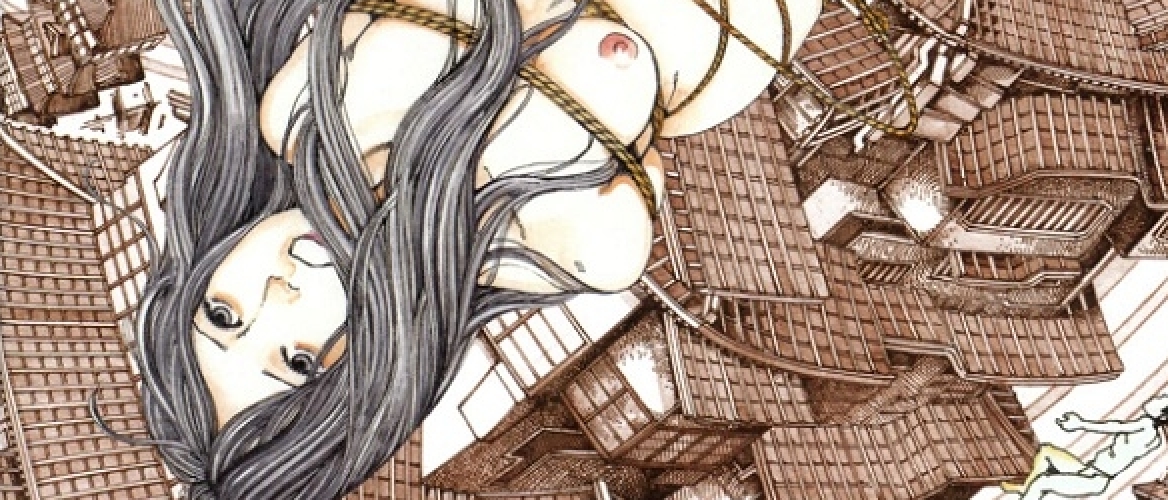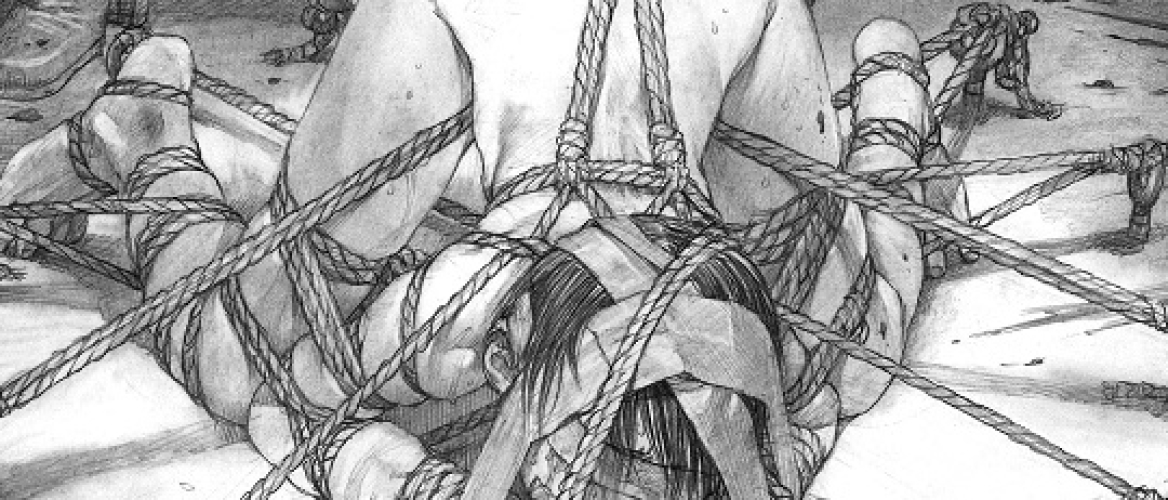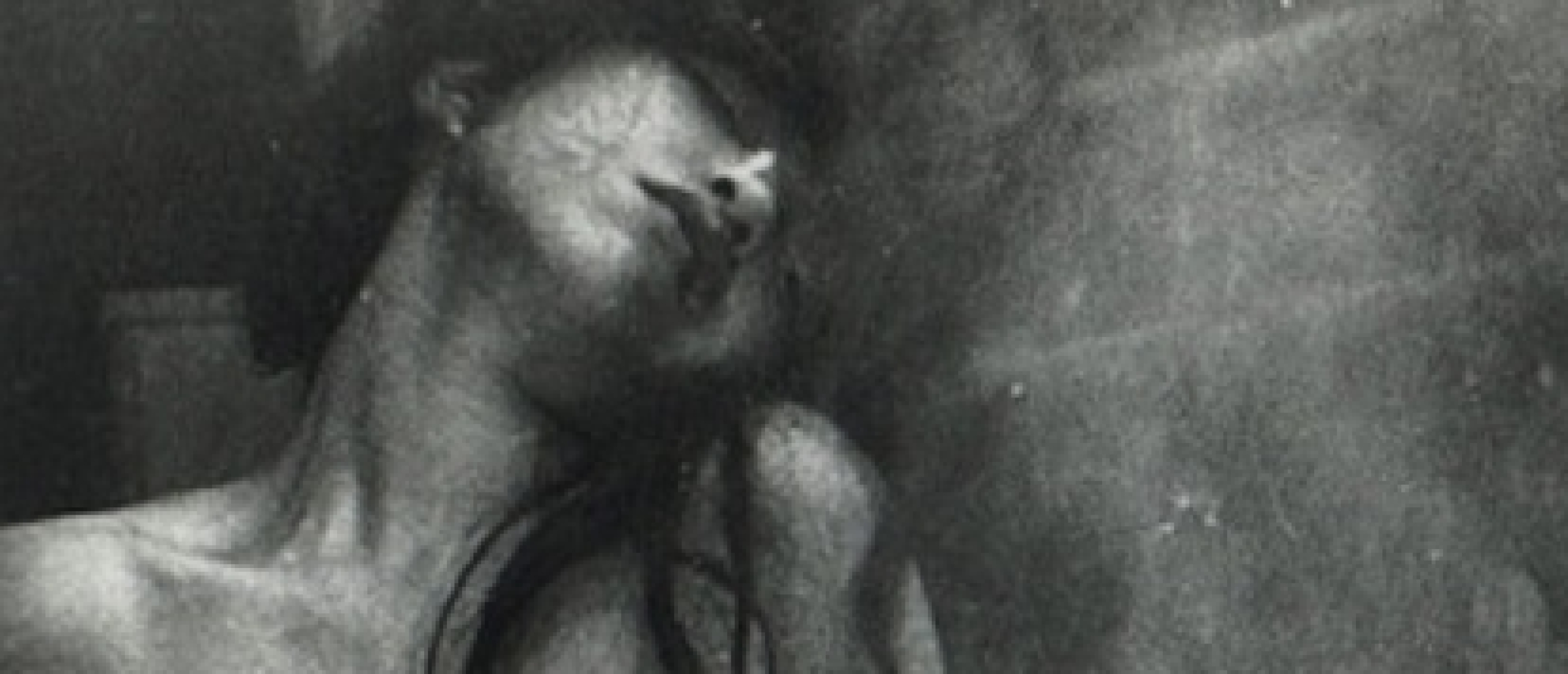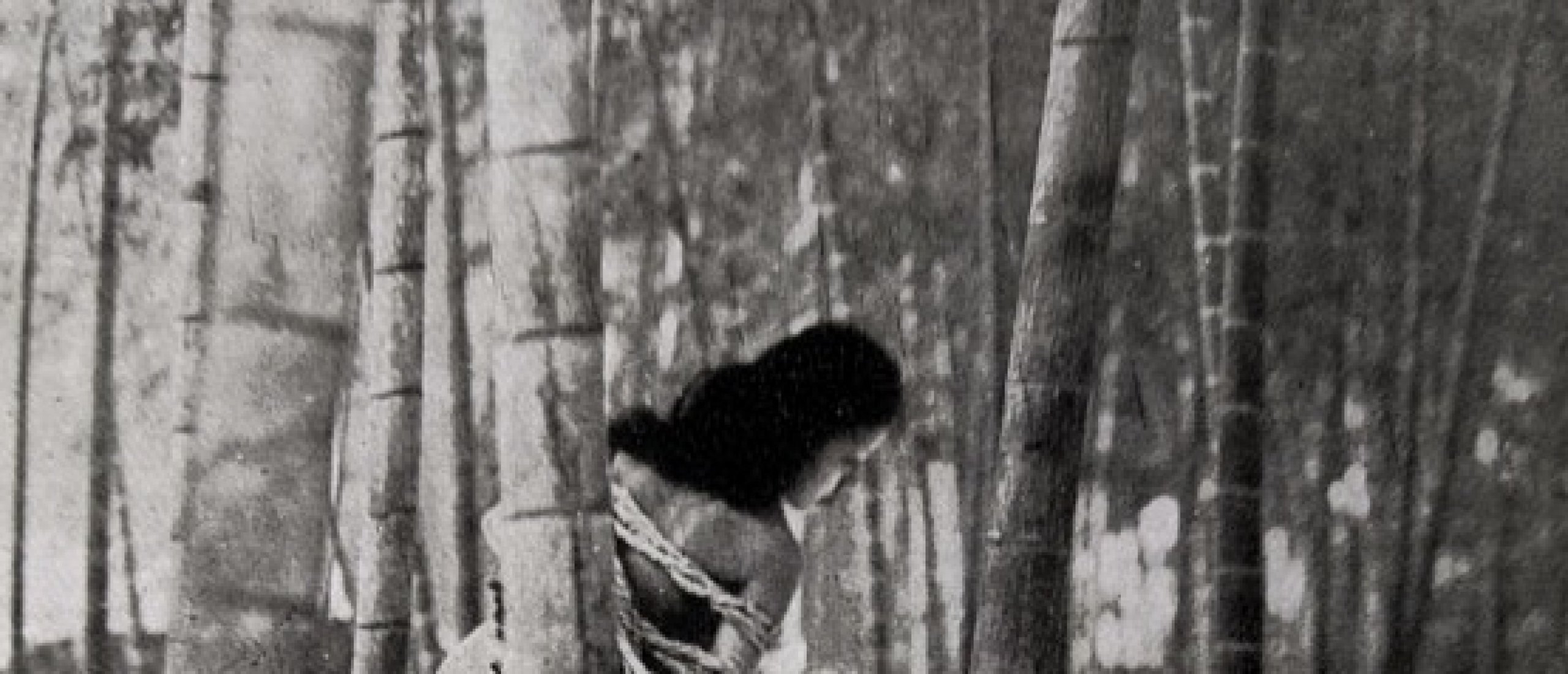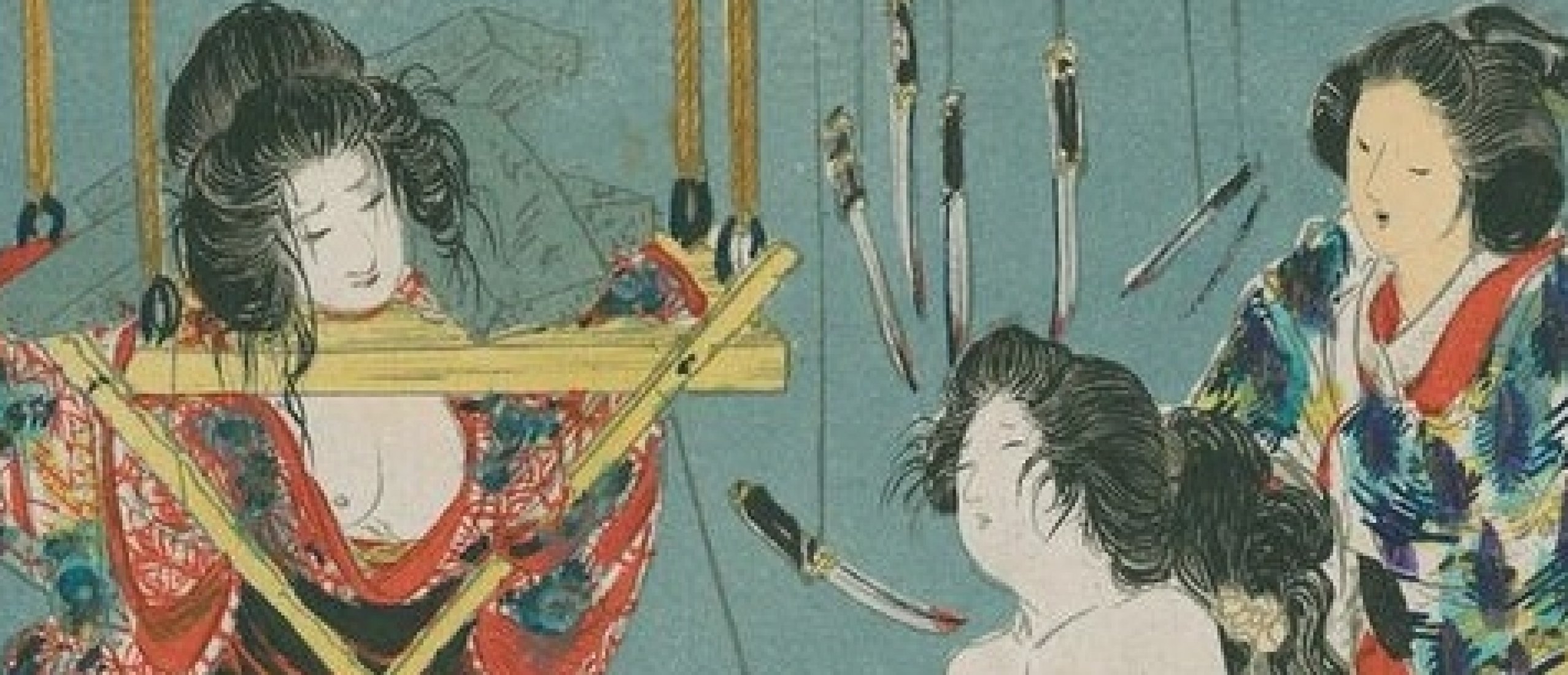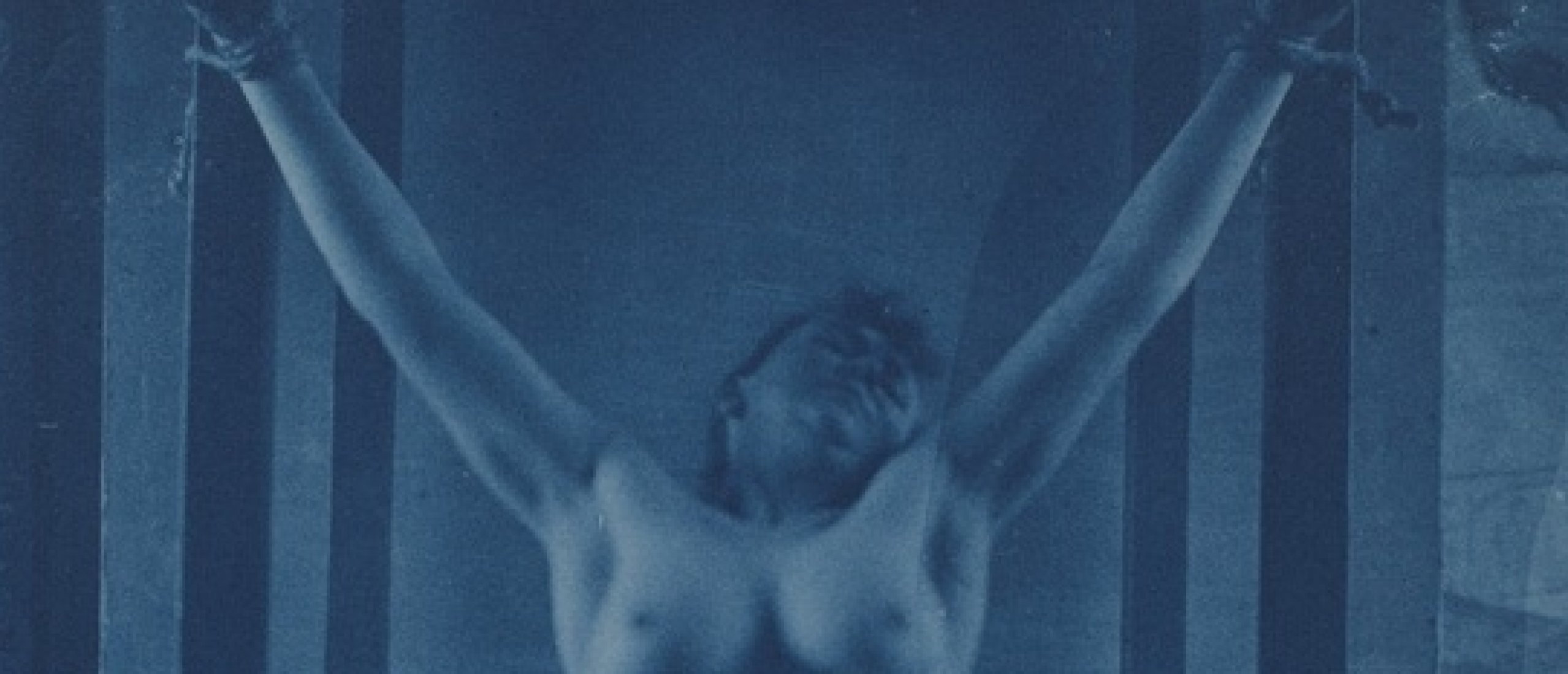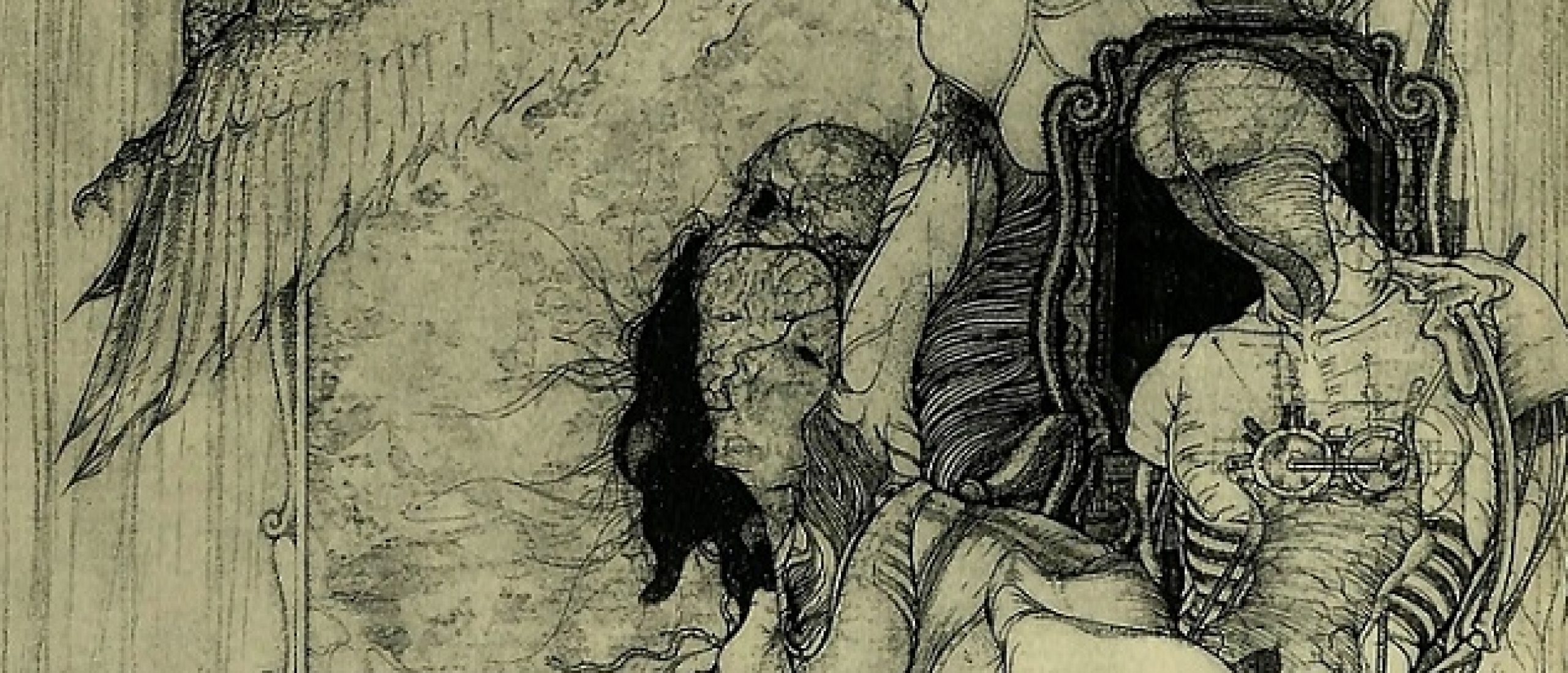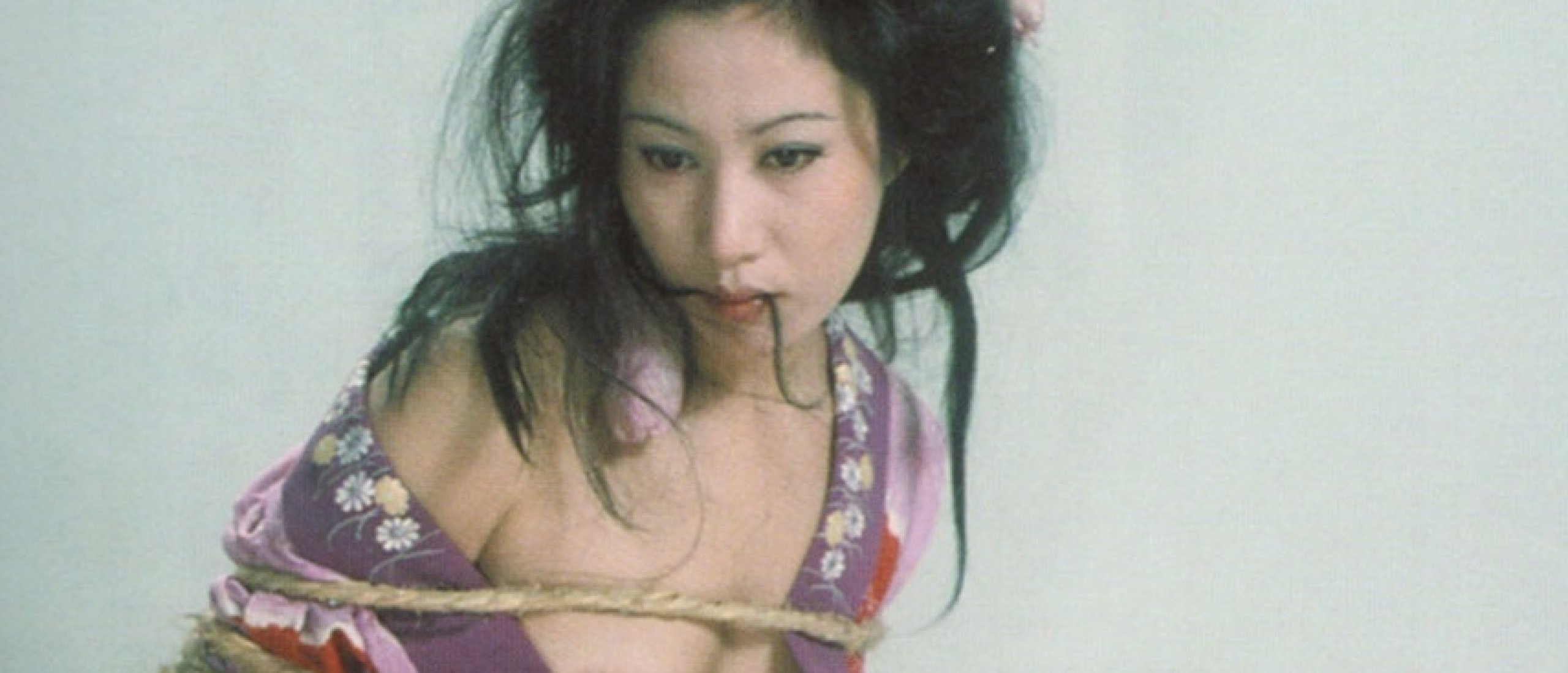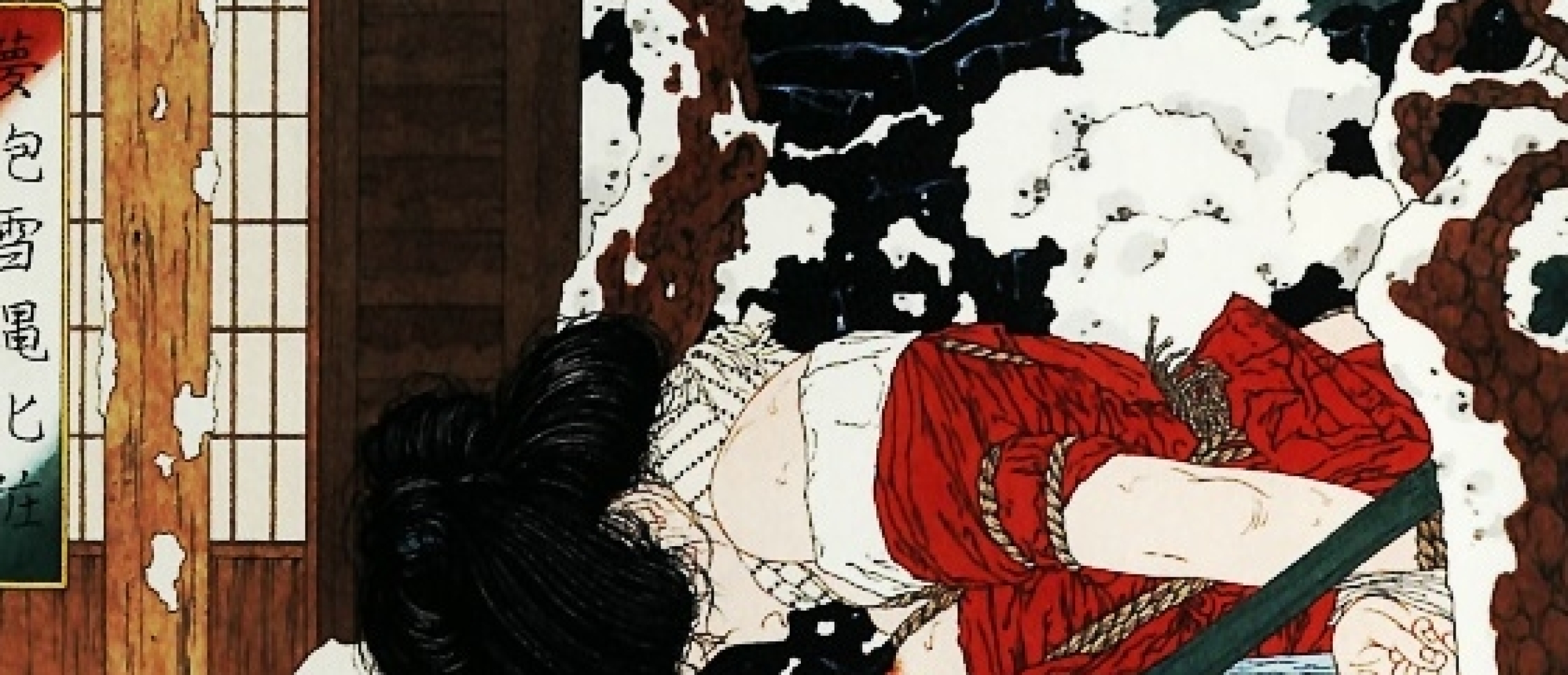
Ito Seiu and the Ero Guro Nansensu
If the ero guro nansensu (Fig.1) can be defined as a cultural tendency that values sex with regard to what deviates from norms and dialogues with the absurd and the grotesque, Ito Seiu's work is in agreement with it, as the artist explores the body as a form of resistance to the patterns defined by the Meiji era:
Each of the three elements implied a perversion, as it were, of conventional values. The celebration of the “erotic” (ero) in its myriad forms constituting a rejection of the Meiji dictum that sexuality was unsuited for public display or representation unless it conformed to the narrow standards of “civilized morality.”
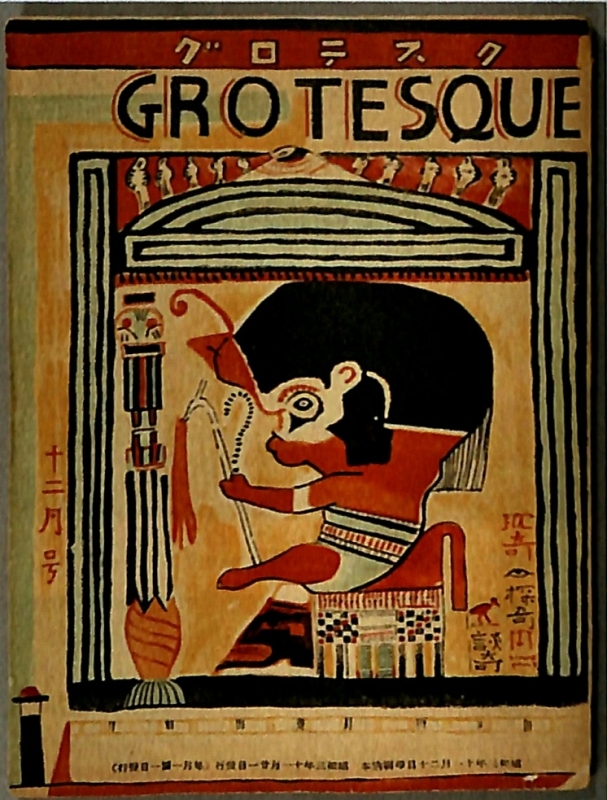
Fig.1.
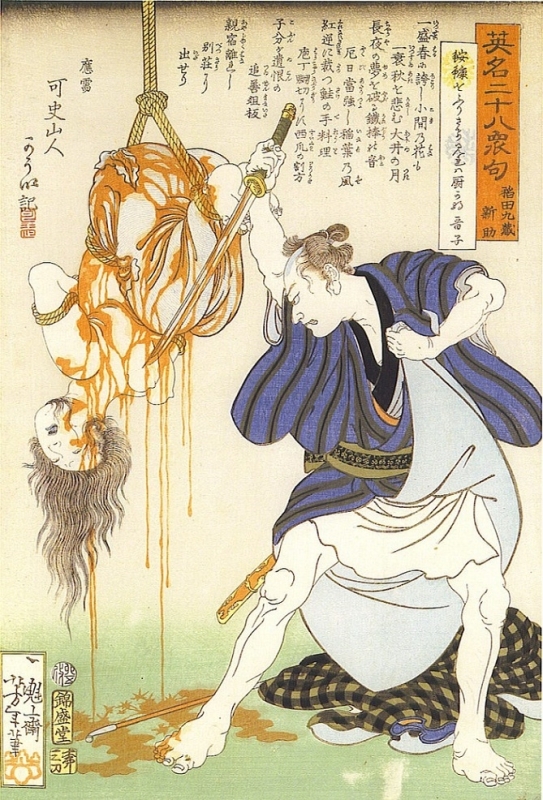
Fig.2. Murder of Ohagi by Saisaburô (1867) from the series Twenty-eight famous murders with verse by Tsukioka Yoshitoshi
Elevation of the “Grotesque”
The elevation of the “grotesque” (guro) betrayed a similar disregard for prevailing aesthetic codes, with their focus on traditional canons of beauty and concealment of the seamier sides of existence. Finally, the valorization of the “nonsensical” (nansensu) signaled a discontent with the constraining nature of received moral and epistemological certitudes. (PFLUGFELDER, Gregory M. Cartographies of Desire. Berkeley: University of California Press, 1999, p. 290).
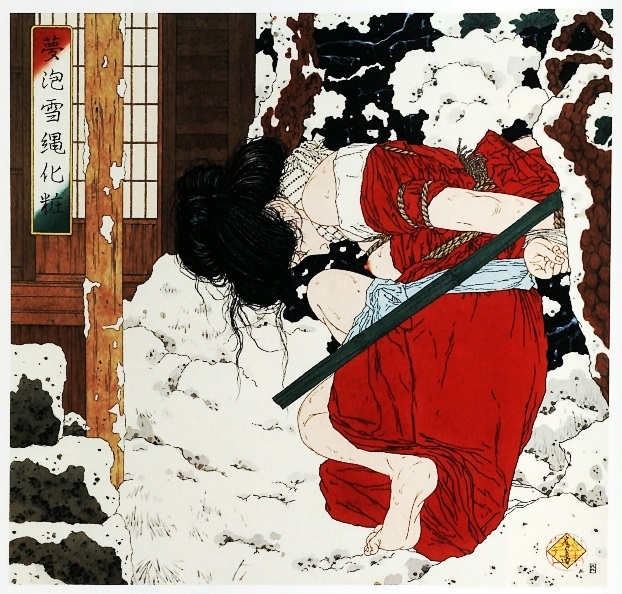
Fig.3. Bound Woman In a Snow Storm (2019) from the Altar of Narcissus series by Takato Yamamoto
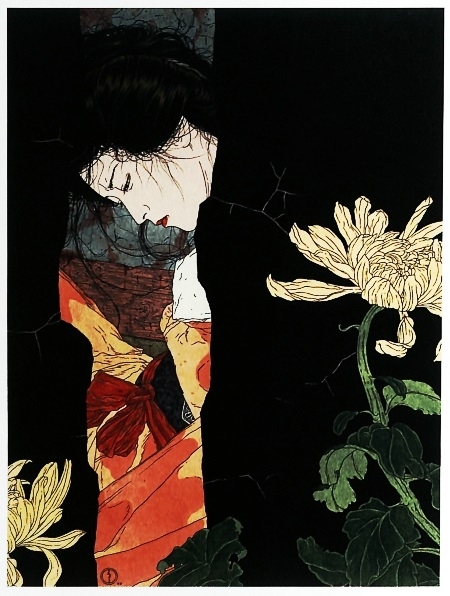
Fig.4. Artwork by Takato Yamamoto
Repugnant and Attractive
By linking the sexual element to hojōjutsu, Ito Seiu managed to find in the public of his time a particular taste for a type of sadomasochism that contemplates the body simultaneously as something strange and beautiful, repugnant and attractive, capable of destabilizing order by revealing contradictions of existence. The immobilized body, in which pleasure and suffering are confused, for the one who ties or is tied up, becomes a mirror not only of his desires, but of his impossibilities. If the physical body demands a limit, that is, respect for the life and integrity of the subject, its fictionalization in painting or literature does not need to be committed to law and morals, as long as no real crime is committed.

Fig.5.
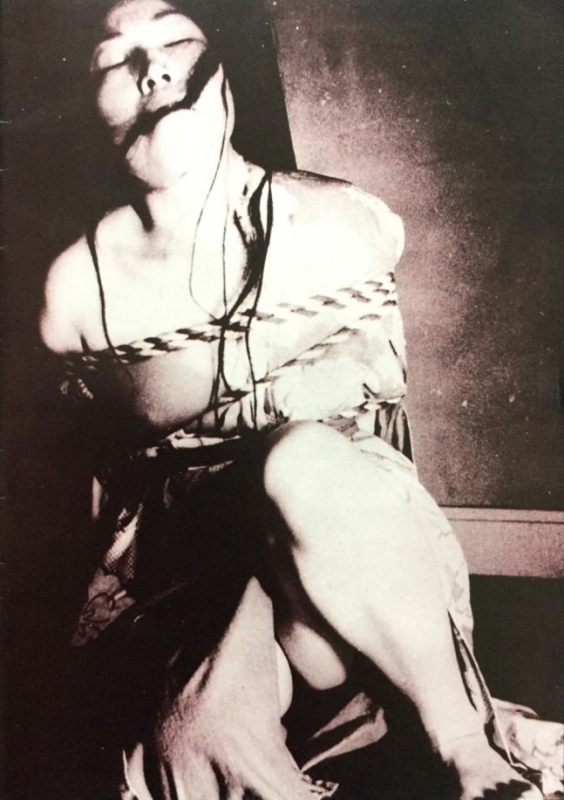
Fig.6.

Fig.7.
Kusōzu Aesthetics
Ito Seiu's admiration for both kusōzu and Tsukioka Yoshitoshi's bloody engravings (Fig. 02) perhaps is due to the awareness that they at the same time refer to reality, but distance themselves from it, insofar as they become expressions of the imaginary. In this case, it is difficult to accept the kusōzu aesthetics as the origin of ero guro nansensu, relying solely on the “contemplation of the dismemberment” they have in common, as Elizabeth Tinsley suggests. The ero guro nansensu is related to Buddhist practices such as kusōzu at the same time as it receives influences from the engravings not only of Tsukioka Yoshitoshi, but of several other artists such as Utagawa Kuniyoshi, Utagawa Kunisada, Toyokuni III, Keisai Eisen, Kawanabe Kyōsai.
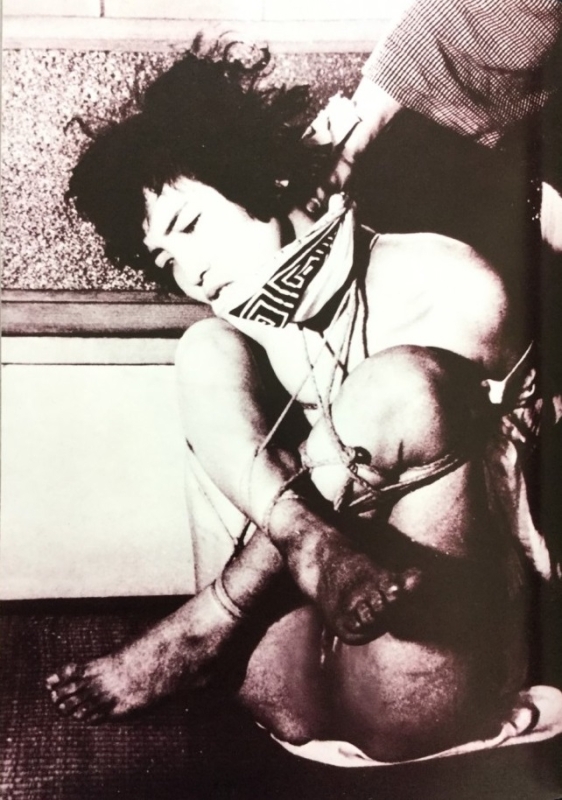
Fig,8.

Fig.9.
Become a Premium member now and discover more about the influences of European art on ero guro nansensu and Ito Seiu, the aesthetic connection between Seiu and the contemporary artist Takato Yamamoto, and more pics of rare kinbaku photographs.
Click HERE for the fourth and final part of our study on the bondage aesthetics of Ito Seiu

